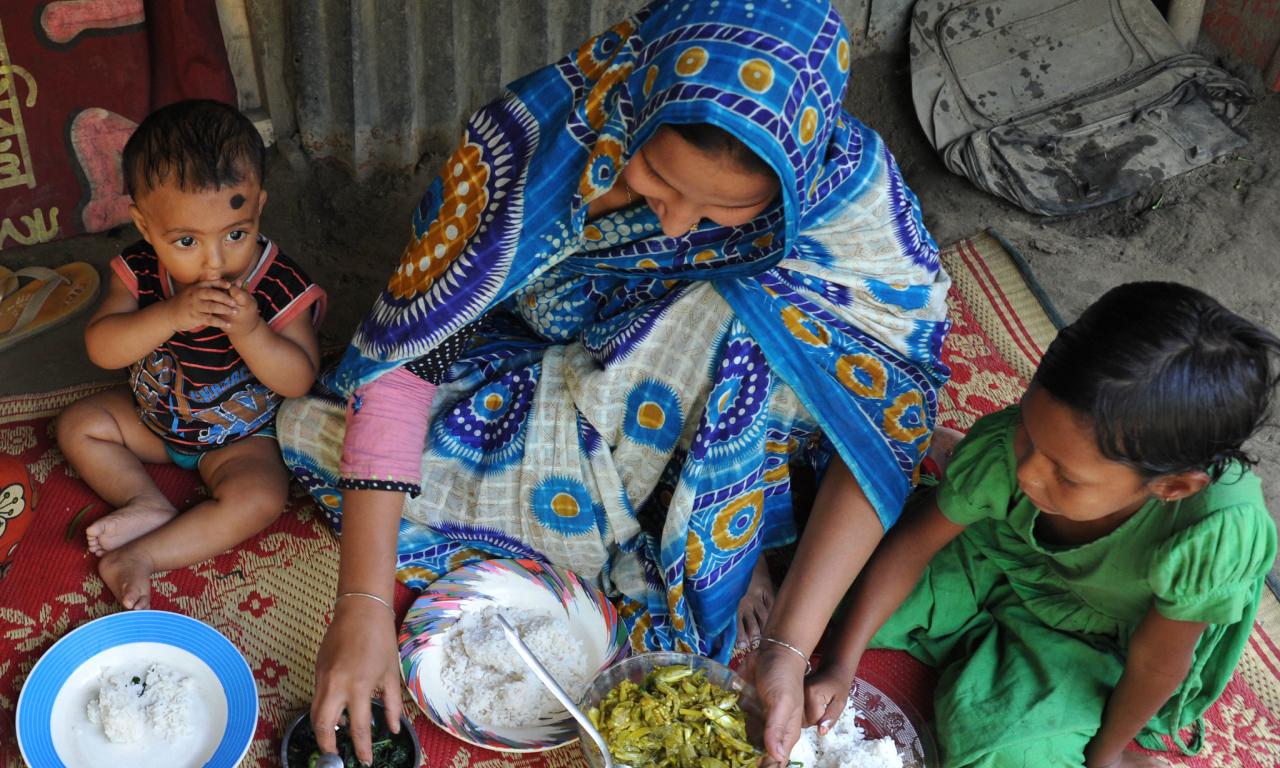
New research records national policy trends linking fish and other aquatic foods with public health. Researchers call for a systems policy approach to ensure aquatic foods tackle stubborn malnutrition rates.
A growing number of nations are prioritizing the link between aquatic food systems and nutrition and public health in policies, marking an increased recognition of the role of aquatic foods in sustainable healthy diets.
New research by WorldFish and partners has assessed the alignment of objectives in national aquatic food systems and public health nutrition policies finding 77 of 158 national fisheries and aquaculture policies identified nutrition as a key objective in the sector, and 68 of 165 public health nutrition policies identified the importance of fish and other aquatic foods consumption as key objectives.
This study reveals a positive trend in policy that prioritizes aquatic foods to nourish nations, said co-author Shakuntala Thilsted, WorldFish’s global lead for nutrition and public health and 2020 World Food Prize laureate.
“It shows the growing recognition of the crucial role aquatic foods have on people's nutrition and health and calls for the increased focus of policies in this area. It also marks a widening in fisheries policy beyond the traditional focus of production, economic efficiency, resource management and environmental issues,” she explained.
Aquatic foods—animals, plants and microorganisms harvested and farmed from water—are rich in micronutrients and essential fatty acids crucial to human health, and fisheries and aquaculture are increasingly recognized for their capacity to sustainably increase nutritious food production to reduce global micronutrient deficiencies and diet-based health risks.

In the last decade, the research community in fisheries and aquaculture has developed a strong focus on the nutritional contribution that aquatic foods make to human health, said another co-author Eddie Allison, WorldFish’s director of science and research for aquatic food systems
“We wanted to see if all this research was being reflected in policy and practice: are food and nutrition programs around the world including fish? Are fisheries management agencies and departments prioritizing or even acknowledging the role that aquatic foods play—or could play—in ending malnutrition?” he explained.
“When we embarked on this study, we assumed there would be a lack of coherence between the two sectors. While we found that to be true, there was also a promising trend, with more recent policies showing higher alignment for both fisheries and public health and nutrition policies,” said the study’s lead author Zach Koehn, an early career fellow at the Stanford Center for Ocean Solutions.
A systems approach to policy can harness aquatic foods to fight malnutrition

The study’s findings show nations that do not make the link between aquatic food systems and health policies have higher rates of obesity and malnutrition, leading authors to call for targeted policies to realize the potential of aquatic foods in transforming food systems for better health and nutrition.
The United Nations State of Food Security and Nutrition in the World 2021 reports healthy diets are out of reach for 3 billion people. Stubborn global malnutrition rates see 149 million children under 5 were estimated to be stunted (too short for age), 45 million estimated to be wasted (too thin for height), and 38.9 million were overweight or obese.
Fish and other aquatic foods provide over 3 billion people with at least 20 percent of their animal protein, representing a central component to local food production, culture and diets. For many poor rural populations in many low- and middle-income countries fish—particularly small fish—may be the most accessible, affordable or preferred animal-source food. However, vulnerable groups such as pregnant, lactating women and young children do not consume enough aquatic foods to gain the nutritional benefits they need.
The researchers recommend systems approaches to policies that promote greater coherence between the sectors and are targeted at vulnerable communities are a way to harness the power for aquatic foods to alleviate stubborn malnutrition rates in low- and middle-come countries. This can built through actions that support human health through the inclusion of aquatic foods in national dietary guidelines, consumption advisories, nutrition programming and private sector initiatives, said Koehn.
A transition to sustainable healthy diets that includes an array of aquatic foods requires coherent policy and strong and inclusive institutional and legal frameworks, Thilsted added.
“The integration of national policies reduces inconsistencies and promotes synergies among government departments and agencies, which encourage nutrition programs like school feeding programs to include nutritious foods such as fish and other aquatic foods that can have generational impacts on health and wellbeing.”
